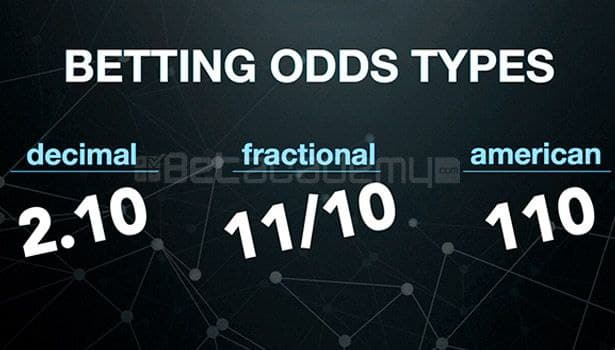An explanation of betting odds – Let’s break down betting odds in a way that’s easy to understand. Essentially, odds represent the likelihood of something happening, similar to how we use percentages in everyday life. If you add up all the possible outcomes of an event, they should total 100%. For example, flipping a coin gives you a 50% chance of landing heads and a 50% chance of landing tails. Or, if you roll a dice, the chance of any particular number coming up is one in six, or about 16.66%. There are three main types of odds used in betting, and I’ll explain how each of them works below.

Understanding Odds
Odds reflect the probability of a particular outcome in an event. Bookmakers set these odds based on their assessment of how likely something is to happen. For instance, if you see odds of 1/1 (also called “even odds”), it means the bookmaker believes there’s a 50% chance of that outcome occurring.
Decimal Odds
Decimal odds are commonly used in mainland Europe and are sometimes called European odds. They’re shown as numbers like 2.0 or 2.5. To calculate decimal odds, you divide 100 by the percentage chance of something happening. So if an event has a 50% chance, you would divide 100 by 50, which gives you 2.0. If you placed a £1 bet on odds of 2.0, you’d get £2 back – £1 in winnings and your £1 stake returned. In decimal odds, the total return always includes your stake.
Fractional Odds
In the UK, fractional odds are the more traditional way to display odds. You might already be familiar with them. They work similarly to decimal odds but look a bit different. Let’s take the same 50/50 example, where the odds are displayed as 1/1. This means that for every £1 you bet, you’ll win £1, plus you’ll get your original stake back, for a total return of £2. The formula here is simple: winnings (1) + stake (1) = £2 total. Fractional odds are just another way of showing the same thing as decimal odds but in a slightly different format.
US Odds
US odds aren’t as common in Europe, but if you’re betting on American sports, you’ll likely come across them. They’re similar to decimal odds but focus only on the profit, not the total return. Using the same 50/50 example, US odds would simply display as 1, meaning that for every £1 you bet, you’d win £1, and your total return would be £2 (including your stake). It’s the same idea as fractional and decimal odds just presented a little differently.